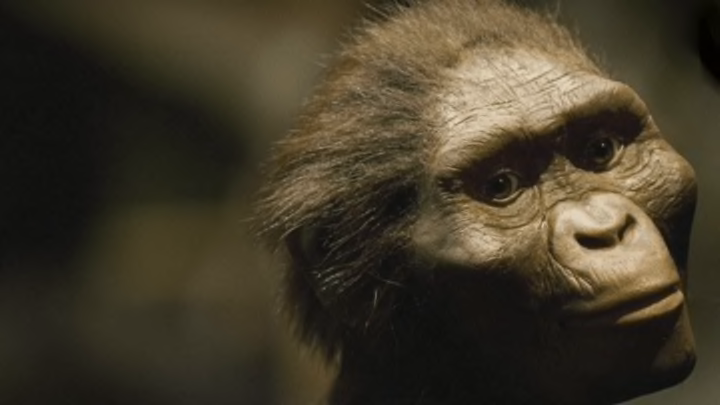Not everything is like riding a bicycle; some skills in life are more of the use-it-or-lose-it variety. Researchers say Lucy may have died from a fall from a tree, possibly as a consequence of losing her ape ancestors’ tree-climbing skills. They published their controversial findings in the journal Nature.
The 3.2-million-year-old remains of an Australopithecus afarensis woman nicknamed Lucy have captivated the world since their discovery in Ethiopia in 1974. Her remains revealed to us the first human ancestors to have walked upright. In 2006, to fan the flames of Lucy’s fame, the Ethiopian government scheduled a tour for Lucy (also known as AL 288-1 and Dinknesh) with as many as 10 museum stops along the way. Many archaeologists feared that travel would cause irreparable damage to the one-of-a-kind skeleton. But the tour went on. During Lucy’s stop at the University of Texas, researchers pounced on the opportunity to put her bones in an x-ray computed tomography (CT) scanner.
Lucy’s distal radius undergoes computed tomographic scanning. Image credit: Marsha Miller, UT Austin
Using the scanner, the team produced 35,000 high-resolution “slices” of Lucy’s remains, which then allowed them to create a true-to-life 3D rendering that would stick around even after Lucy left.
Paleoanthropologist and project leader John Kappelman was examining the rendering when he saw something unusual: a strange break in Lucy’s right humerus (upper arm bone). In comparing the prehistoric injury to images of modern bone breakage, he realized it looked an awful lot like a four-part proximal humeral fracture, in which a blow to the shoulder blade smashes down the head of the humerus, compressing it into the shaft of the bone. Today, this kind of injury is common in car accidents when people have used their hands to brace against the dashboard, but it’s also typical in falls from great heights.
Kappelman and his colleagues then used a 3D printer to create a hard copy of the bones. They brought the newly made remains to nine orthopedic specialists, who all agreed with Kappelman’s initial assessment of a four-part proximal fracture. They suggest her injuries are consistent with someone who had fallen from a height of approximately 45 feet—about as high in the trees as chimpanzees typically build their sleeping nests—at a speed of about 37 mph.
“It may well have been the case that adaptations that permitted her to live more efficiently on the ground compromised her ability to move safely in the trees—and may have predisposed her kind to more falls,” Kappelman told Science.
Not everyone is convinced. Other archaeologists argue that other parts of Lucy’s body were far more fractured than they would have been after a fall. Of her shattered ribs, Kent State University biological anthropologist Owen Lovejoy said in Science, “you couldn’t do that with a shotgun blast.”
Then there’s the fact that Lucy’s bones could easily have been damaged after she died. Paleoanthropologist Don Johanson of Arizona State University, who discovered Lucy in 1974, is skeptical. “Terrestrial animals like antelopes and gazelles, elephants and rhinos and giraffes—all these bones show very similar fracture and breakage patterns as Lucy,” he pointed out to Science. “You can be sure they didn’t fall out of trees.”
Know of something you think we should cover? Email us at tips@mentalfloss.com.
